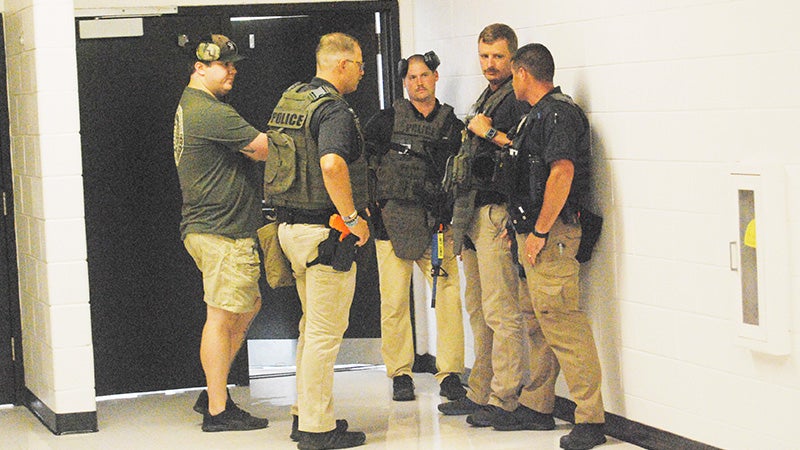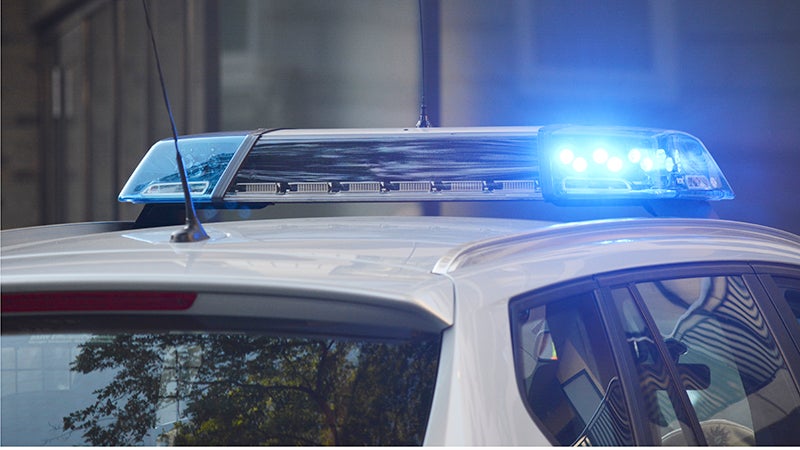‘Split-second’ decisions to save lives: LPD leads active shooter training at Callaway High School
Published 9:00 am Wednesday, August 3, 2022
|
Getting your Trinity Audio player ready...
|
Callaway High School, and the rest of the Troup County School System, will start the 2021-22 school year on Friday, and everyone is getting prepared.
That means teachers preparing classrooms and students buying last-minute supplies. On Tuesday, school employees focused in on safety, being prepared for the unthinkable — an active shooter event.
“These events can be very complex and very dynamic,” LaGrange police officer Jim Davison said. “[Faculty] need to have an understanding of what to and what their options are.”
Before the active shooter drill commenced, Davison and Troup County School System safety director Safety Director Steve Heaton ran through a multitude of different scenarios and what to do.
In complex situations like this, split second decisions can mean the difference between life and death. That is why the Callaway faculty and staff gathered into the cafeteria to get a briefing on how to operate under pressure. Davison, Heaton and Callaway principal Jason Graham joined forces to break down what the faculty needs to do in this situation.
“It’s not always simple,” Davison said. “When kids are in transition between classes, what can you really do? It doesn’t matter what class they belong to, you need to grab as many students as you can in five to six seconds.”
The message that was preached throughout was to adhere to the philosophy of run, hide, and defend.
This means that your first instinct should be to run then to hide and defend yourself if the situation calls for you to do so.
The whole process during the drill is to make split-second decisions that will help keep the maximum number of people alive. This is not an ideal scenario, but it is the situation that schools all across the United States face.
“We did a lot of training for this every year, and I’m confident at the local level that we know how to respond to these types of events,” Davison said.
Since school shooting rampages only last 5 to 6 minutes on average, communication is key in regards to how quickly everybody in the building can be aware of an active shooter.
When an administrator confirms there is an active shooter, an alert goes out to every computer in the building, an alarm goes off as well as an announcement over the intercom that the school is going into a hard lockdown.
The faculty was informed that you have a 5 to 6 second window to lock the door and get the students into the safest corner of the classroom. The school is currently working to find a way to cover all the windows going into classrooms.
“We have talked about the possibility of getting tint. That is one way so that somebody can see out, but somebody can’t see in,” Graham said.
The faculty were broken up into groups and escorted to four classrooms. Each had a person in charge with those individuals taking full responsibility for locking the classroom down once a hard lock down had been issued. The police department had a person act as the shooter and fire off blanks outside the classroom. Despite the controlled environment, the firing of blanks gave the situation an eerily realistic vibe.
While not causing outright panic in the classroom, the drill did stir up the faculty. The drill also included “actors” simulating injured students, including one that was sent running and screaming down the hallway.
“There was somebody screaming and banging on the door, and there was a split second where you thought ‘I should let them in,’” said Mike Petite, a history teacher at Callaway.
Petite was the one in charge of his respective classroom and quickly locked the door and got his “students” in the safest corner.
These are the tough decisions that faculty all across the country have had to make in dire situations. Even in situations in a controlled environment, teachers were left questioning tough decisions they made.
“It can be tough for teachers,” Davison said. “They know these students, they love these students, and it can be hard to not let them in.”
This is a learning process for everybody involved from the Callaway faculty, to the local police to the students that line the halls five days a week.





